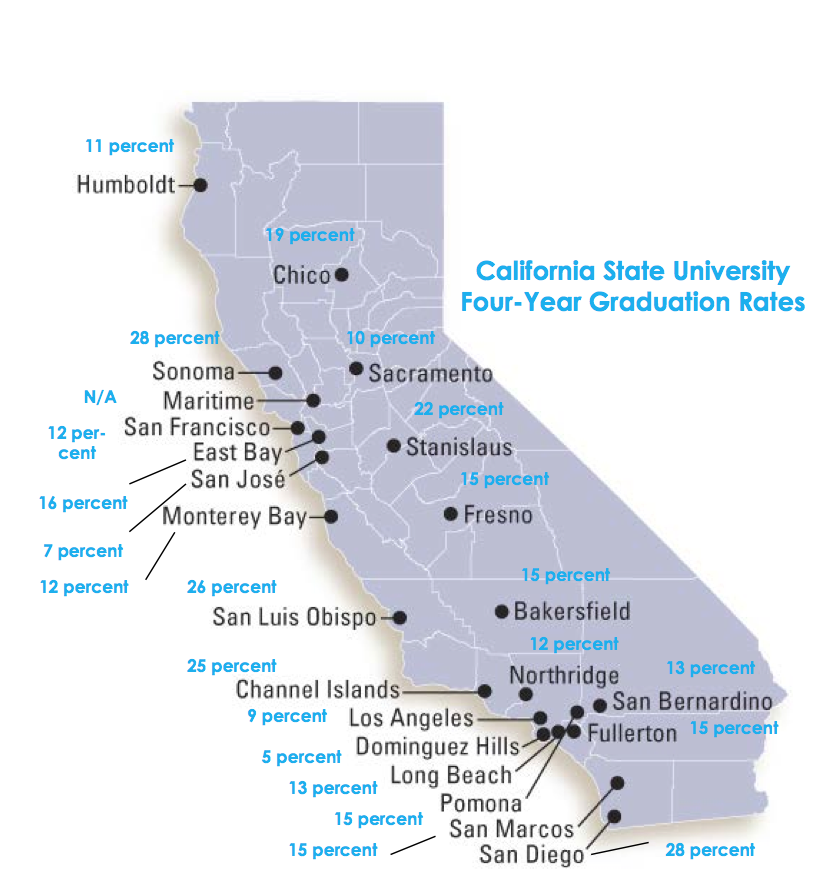Nineteen percent of first-time freshmen in the California State University graduate within four years — a statistic that’s prompted state Sen. Steve Glazer (D-Orinda) to propose legislation to increase the current graduation rate.
The bill, proposed last week, would offer students financial and academic incentives for agreeing to take a minimum of 15 units a semester, allowing students to graduate in four years — something few CSU students achieve based on current data.
Glazer, a former CSU trustee and strategist for Gov. Jerry Brown, is an alum of the CSU and was an advocate for students as part of the California State Student Association during his time at San Diego State University.
“The 19 percent four year graduation rate is really upsetting. As freshmen in high school, we’re told it only takes four years to get a college degree,” said Sonoma State University Associated Students Senator for Sustainability Claudia Sisomphou. “I think our generation is the first to face the dilemma of having to pay for extra years of college.”
If the proposed legislation is adopted, CSU students, who agree to take 15 units or more, would be eligible for priority registration — which would ideally help students enroll in the required classes needed to graduate, leading to graduation after four years.
In recent years, Sonoma State students have become all too familiar with the struggle of registration and class availability.
“I think the fact that students get wait-listed and the lack of available class [is what makes it difficult to graduate in four years],” said Stephanie Fuentes, a junior political science major. “It’s not that students don’t want to take classes, it’s the availability.”
The CSU graduation rate of 19 percent is substantially lower than the national average of 34 percent, according to the U.S. Department of Education. Meeting in the middle, the four -year graduation rate at Sonoma State is 29 percent, according to College Board data from 2012.
Elizabeth Chapin, interim public affairs director for the CSU, said part of the reason students in the CSU take longer than four years to graduate is because many of them are required to take remedial level classes in their freshman year.
“Students entering the CSU fully prepared for college-level coursework graduate in shorter periods of time,” said Chapin. “But a large number of students entering the CSU are not prepared for college-level coursework.”
With Glazer’s bill, students who agree to take the minimum unit load and maintain a specific GPA would be relieved of the burden of registration with priority.
In addition to priority registration, students could also be eligible for tuition waivers, or refunds for required classes that weren’t offered during their first four years at the university as well as more academic advising, according to the bill.
“I think it’s great [legislators] are coming up with incentives, but personally, I try to take as many units as I can, however I am still facing the dilemma of [graduating] in five years,” said Sisomphou.
Chapin said the CSU hasn’t taken a position on the bill and the CSU hasyet to draft a cost analysis in regard to the bill.
“The California State University shares Senator Glazer’s goal of helping students earn their degree in a timely manner,” said Chapin. “Currently, we are analyzing the bill and we look forward to working with him.”
Glazer’s bill is similar to programs used at four CSU campuses — a program intended to raise graduation rates through student incentives. The Finish in Four program at CSU Fullerton, implemented in 2010, has some of the same goals as Glazer’s bill to help students graduate in a four-year span with the help of academic advising and educators committed to student success.
Glazer’s bill remains under review in the California Senate, though Glazer says he is confident in his proposed program and that it can succeed with little funding, he told the Los Angeles Times.
“I don’t think the bill is realistic,” said Fuentes. “If you can’t get funding for the school itself, how can you get funding for this bill?”





![[Both photos courtesy of sonoma.edu]
Ming-Ting Mike Lee stepped in as the new SSU president following Sakakis resignation in July 2022](https://sonomastatestar.com/wp-content/uploads/2024/04/CC4520AB-22A7-41B2-9F6F-2A2D5F76A28C-1200x1200.jpeg)



























